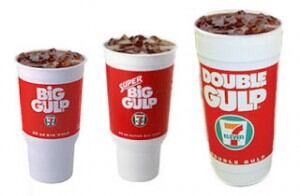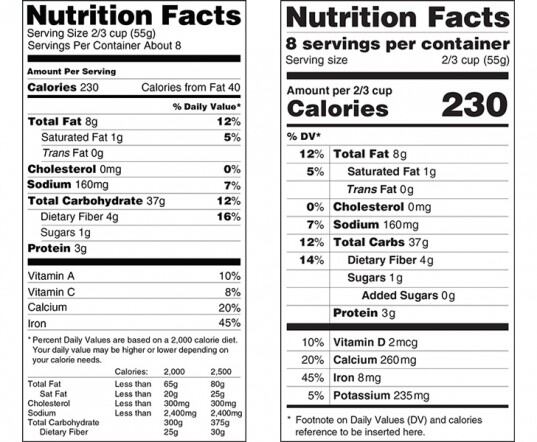“What this measure is trying to do is shift the norms,” Dr. Young told us. “It’s not preventing you from going back and buying more. It’s not a ban. It’s about how much is considered a reasonable amount of food or to drink to consume at one time. What happens is the consumer tends to play the victim by saying, whatever [the soda manufacturer] is selling me, I can eat in a reasonable quantity. Even if that quantity is a 32-ounce jug, it ends up being reasonable because the soda company is marketing and selling it.”

Food cost of upsizing is marginal
She chalked up the value proposition of upsizing for businesses as a possible contributor to the problem, as food is probably one of the cheaper of their costs.
“Look at Starbucks. They have to pay rent, staff, equipment and utilities; the actual coffee costs them nothing by comparison. So if they increase the size by six ounces and charge an extra quarter, it costs them almost nothing, but people buy into that perceived value.”
This approach is probably best exemplified at movie theaters. “If you go to the movies and want to buy a soda, and the only options are a 30-, 40- or 50-ounce soda, that doesn’t count as choice,” she said. “They’re not giving anybody a choice to drink a reasonable amount, even if they want to.”
She doesn’t deny the uphill battle required to shift opinion away from “bigger is better”, noting that it will demand some risk taking by beverage companies.
“They must create an atmosphere in which smaller portions [8, 10 and 12 ounces] are marketed and in which downsizing, not upsizing, is encouraged," she said. "If they simply got rid of the biggest size, the large would no longer be so large and they’d have to scale back accordingly to account for those choices no longer being there.”
Though she’s not sure how the state Court of Appeals will vote on June 4, Dr. Young doesn’t agree with last year’s State Supreme Court ruling that determined Mayor Bloomberg's proposed soda cap was “arbitrary and capricious”, and an illegal overreach of executive power.
“Dunkin’ and a lot of places had already repackaged and remarketed everything. Much of the city had prepared for it,” Dr. Young said. “It came down to who has control. The judge called it 'arbitrary' but I wouldn’t necessarily agree. 7-Eleven and the supermarkets are under state jurisdiction, while the restaurants are under city jurisdiction, so it made sense the city went for limiting sizes in restaurants. Part of the problem was the city and state didn’t agree.”

We have no choice but to take more radical approaches to curbing obesity
So will raising consumer awareness through better labeling be enough to effect change? Dr. Young lauded the FDA’s recent Nutrition Label update proposals, which include a line for added sugar and place more emphasis on calories. “I think it’s excellent to draw people’s attention to added sugar, along with calories and serving sizes. Still, in some cases where the serving sizes are bigger, that may have unintended consequences. People look at calories; they don’t pay attention to serving size.”
She also applauded the soda industry’s voluntary initiative to disclose calories and serving sizes on the front of labels, along with the rollout by many of smaller portion sizes, but she doesn’t think such self-regulation efforts are aggressive enough.
“For one, you’re not going to share a 20-ounce bottle with 1.5 other people,” she quipped, in reference to the 2.5 serving size denoted on the front of 20-ounce soda bottles. “Plus, you can only buy those 7.5 ounce cans as a six pack, and they cost more money per unit than a 12-ounce can. The problem is, the soda companies have a lot of money behind them, much more than any department of health.”
Dr. Young noted that she welcomes more radical approaches, such as the proposed warning label on sugary beverages in California, which was recently put on hold because of cost concerns.
“Soda is one of the foods you could put a warning label on because it has no redeeming qualities,” she said. “Something like cheese or even ice cream, which high in fat but also high in nutrients like calcium, would make it harder for that to work. With soda, I’m not sure there’s really a downside. It’s not like anybody thinks it’s healthy anyway.”
She added: “We have to take more radical approaches. I think we have no choice.”
